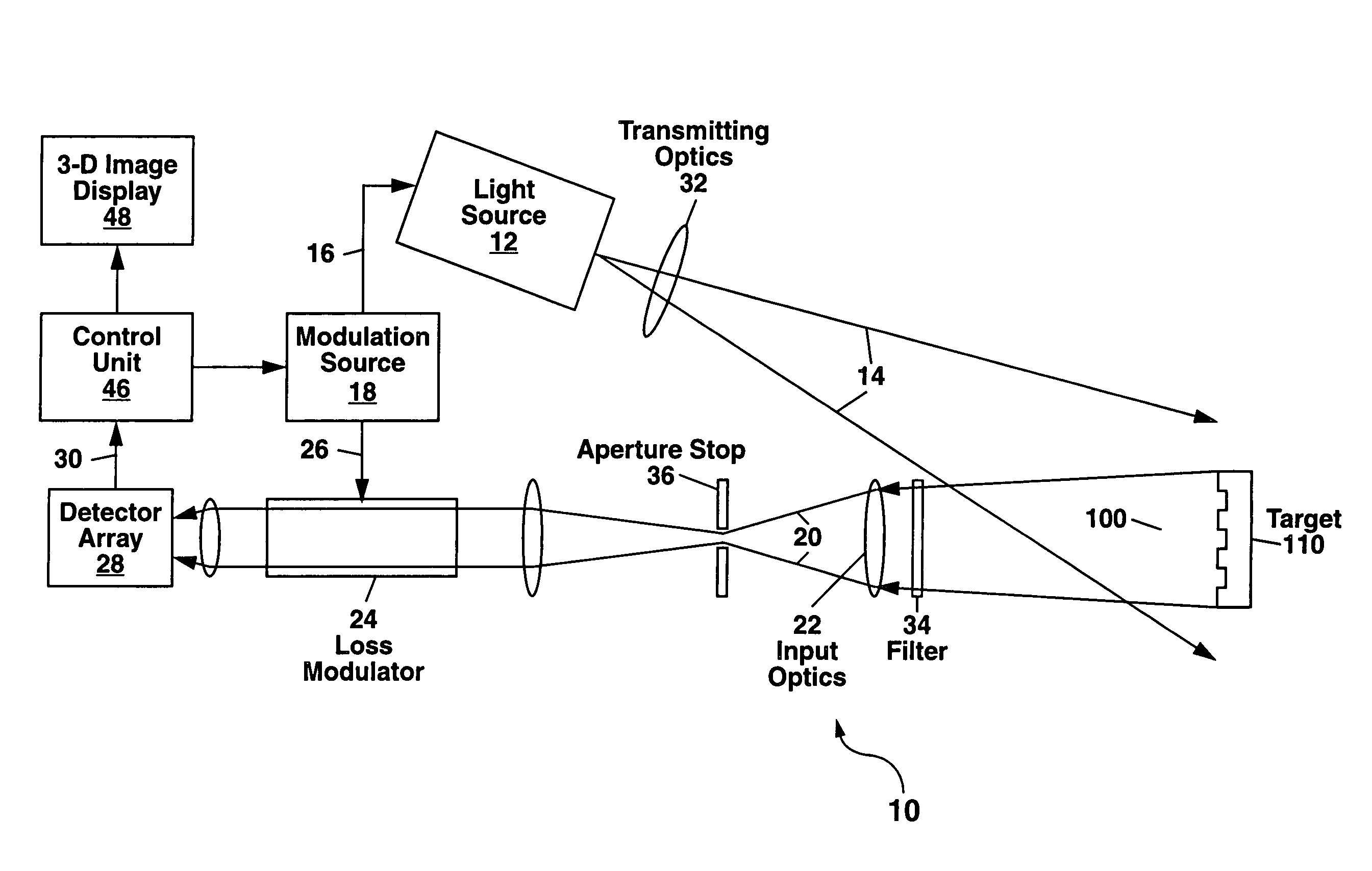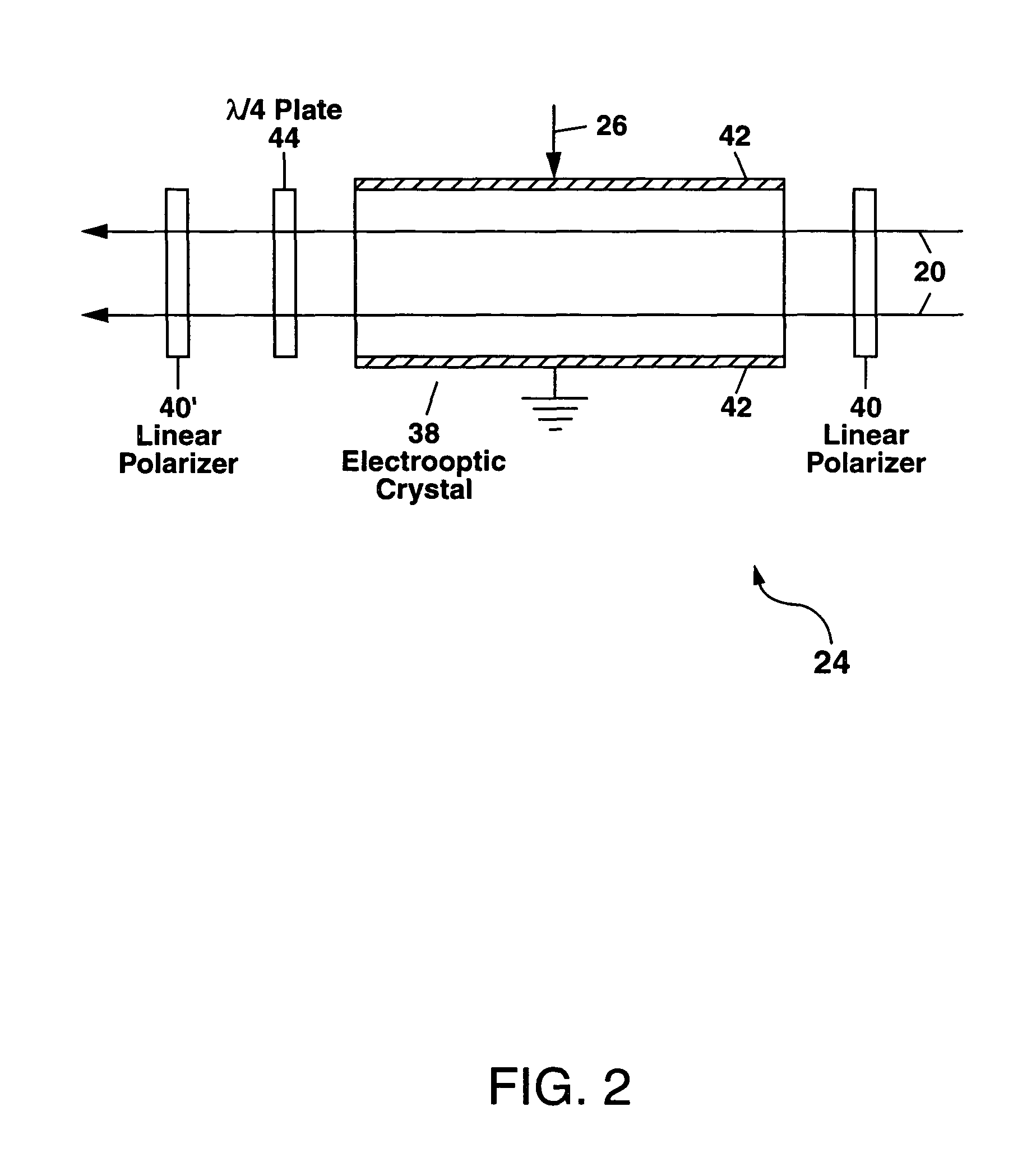Scannerless laser range imaging using loss modulation
a laser range imaging and loss modulation technology, applied in the field of laser range imaging apparatus, can solve the problems of reducing the resolution, affecting the eye safety of people in the field of view, and affecting the accuracy of the image intensifier tube,
- Summary
- Abstract
- Description
- Claims
- Application Information
AI Technical Summary
Benefits of technology
Problems solved by technology
Method used
Image
Examples
Embodiment Construction
[0018]Referring to FIG. 1, there is shown a first example of the scannerless 3-D imaging apparatus 10 of the present invention. The apparatus 10 comprises a continuously-emitting (also termed continuous-wave or cw) light source 12 which emits a light beam 14 to provide a non-scanned illumination of a field of view 100.
[0019]The terms “continuously-emitting,”“continuous-wave” and “cw” as used herein refer to a light source 12 which emits light over a time scale which is measured in units of microseconds to seconds or longer, and is to be distinguished from a pulsed light source which emits light in pulses with the duration of each light pulse being much smaller than one microsecond, and generally on the order of ten nanoseconds or less. A “continuously-emitting” light source 12 as this term is used herein can also refer to a light source 12 in which the emitted light is modulated at a frequency fo with each modulation cycle of the emitted light having substantially the same peak ampl...
PUM
 Login to View More
Login to View More Abstract
Description
Claims
Application Information
 Login to View More
Login to View More - R&D
- Intellectual Property
- Life Sciences
- Materials
- Tech Scout
- Unparalleled Data Quality
- Higher Quality Content
- 60% Fewer Hallucinations
Browse by: Latest US Patents, China's latest patents, Technical Efficacy Thesaurus, Application Domain, Technology Topic, Popular Technical Reports.
© 2025 PatSnap. All rights reserved.Legal|Privacy policy|Modern Slavery Act Transparency Statement|Sitemap|About US| Contact US: help@patsnap.com



